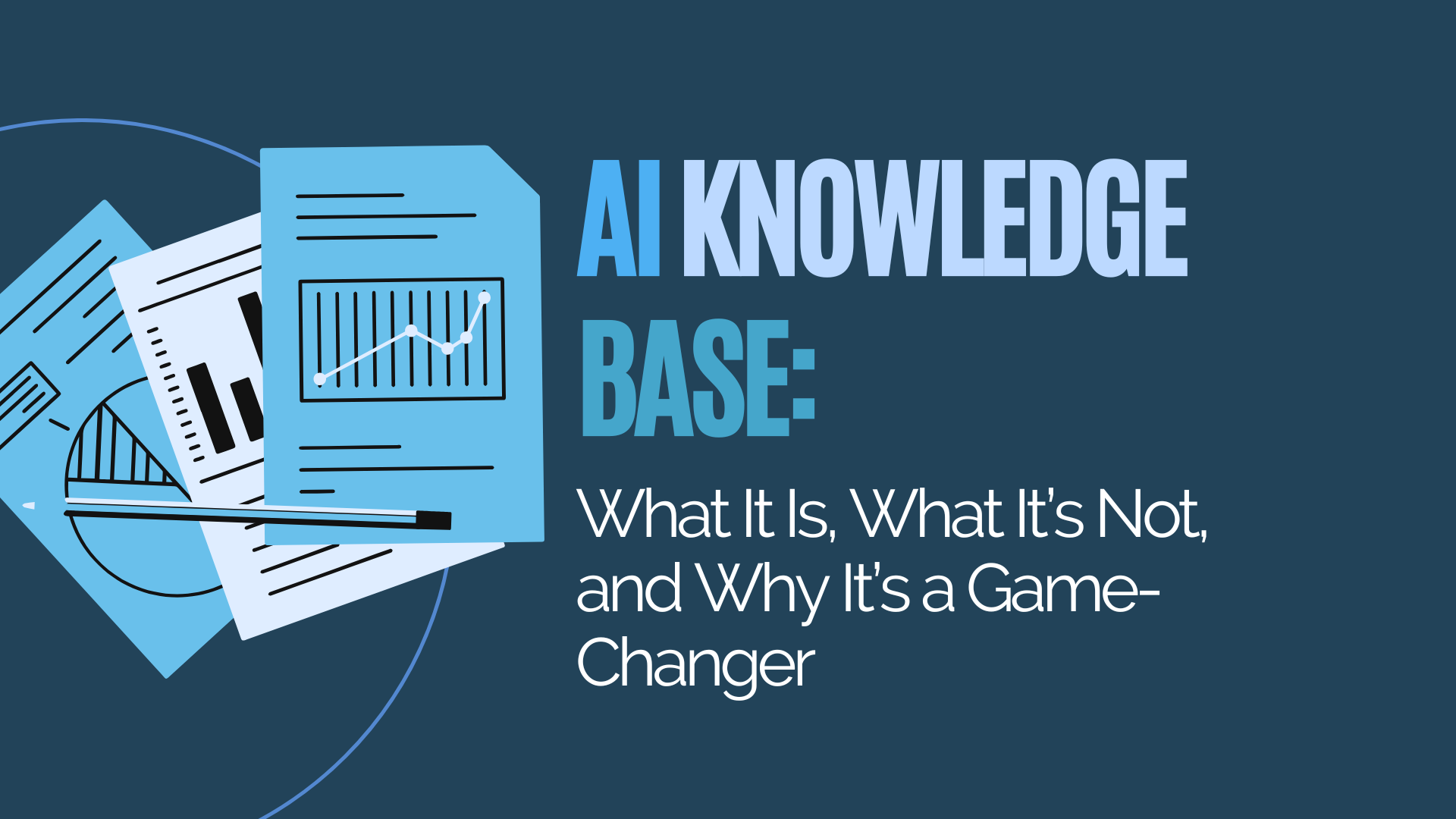AI Knowledge Base: What It Is, What It’s Not, and Why It’s a Game-Changer

AI Knowledge Base: What It Is, What It’s Not, and Why It’s a Game-Changer
Customers today expect instant answers. But if your help center is clunky, outdated, or filled with hard-to-find content, it won’t matter how much documentation you have. That’s where AI knowledge bases come in. These tools promise smarter self-service by combining artificial intelligence with your internal expertise.
In this guide, we’ll explain what an AI knowledge base really is, what it isn’t, and why it’s quickly becoming a must-have for modern support teams.

What Is an AI Knowledge Base?
An AI knowledge base is a self-service platform enhanced with artificial intelligence. It uses large language models (like GPT), machine learning, and smart analytics to improve how content is created, surfaced, and used by both your team and your customers.
Core AI Capabilities:
Unlike traditional knowledge bases, which rely heavily on manual input, AI-enhanced platforms accelerate the content creation process and make it easier to maintain accurate, relevant documentation over time.
Real-world use case:
A support team receives dozens of questions about integrating their app with Slack. Instead of writing each article manually, they use an AI tool to generate a draft from a few bullet points. A human editor reviews and publishes it—cutting hours from the process.
“I love the AI article creation feature… it turns our chat conversations into support docs that are 80% done, which my team just reviews and posts.”
How It Fits Into Modern Workflows
AI knowledge bases don’t operate in a vacuum. They connect with your support tickets, CRM, and even chat tools. This means content updates can be triggered by customer conversations or product changes—keeping your docs fresh and useful without constant manual upkeep.
A Quick History of Knowledge Bases
Knowledge bases started as simple static FAQs. As companies grew and products became more complex, these turned into large documentation libraries. Early tools like MediaWiki and SharePoint helped organize knowledge—but they weren’t built for speed or scalability.
Then came SaaS help center tools like Zendesk and Intercom, offering easier content creation and better UX. But most still required manual upkeep, and the content often went stale.
The next evolution? AI.
AI-enhanced knowledge bases close the gap between fast-moving product teams and their support content. They reduce the time lag between knowing something internally and making it available externally. And for lean teams, that’s a game changer.
Common Mistakes to Avoid When Using AI in Your Help Center
Even the best tools can underperform if used incorrectly. Here are common pitfalls to avoid:
Mini FAQ: AI Knowledge Base Questions Buyers Ask
AI Knowledge Base vs. Traditional Knowledge Base
Traditional KBs are still useful—but AI-enhanced systems offer speed, relevance, and scale.
AI Knowledge Base Tool Checklist
Use this checklist when evaluating a platform:
HelpSite meets all these criteria out of the box.
How HelpSite Uses AI the Right Way
HelpSite adds AI without overwhelming the user experience.
Key Features:
“We launched a public help center in under an hour. Customers find answers before emailing.”
—Harry P., Product Manager
Future Plans
The ROI of Smarter Support Content
Investing in a knowledge base is no longer just a “nice to have”—it’s a cost-saving, retention-boosting necessity. According to Zoomin Software’s 2023 ROI of Self-Service report, organizations that invest in strong self-service tools see an average case deflection rate of 39%—leading to faster support, lower costs, and better customer satisfaction.
When AI enters the picture, those returns accelerate:
One SaaS customer using HelpSite’s AI assist reported that support reps went from publishing one article per week to four. That’s a 4× productivity gain with zero added headcount.
Over time, these small efficiency wins compound into measurable ROI—especially for support teams handling hundreds of inquiries per day.
How AI Improves Customer Experience
From the customer’s point of view, AI doesn’t just improve speed—it improves experience:
AI isn’t just about saving money. It’s about making customers feel like the company gets them—and anticipates their needs before they even click “contact.”
According to a Microsoft study, 90% of consumers expect an online brand to offer a self-service portal. AI helps meet that expectation with less overhead and fewer missed opportunities.
Expanding to Multilingual and Global Teams
As your business grows globally, your help content has to grow with it. AI can play a role here too:
While you’ll still need human editors to refine tone and context, AI can dramatically reduce the barrier to building multilingual support documentation.
The Case for AI in Onboarding & Training
AI isn’t just for external customers. Many companies now use their knowledge base for:
By using AI to maintain these docs:
You can even set up a private HelpSite just for your internal wiki—making it easy to scale without a clunky intranet.
Final Take: AI Is the Future of Support Docs
AI-powered knowledge bases are no longer optional. They’re becoming the default for companies that want to scale support without scaling headcount.
They help teams work faster, help customers help themselves, and keep documentation from falling behind. AI isn’t replacing your team—it’s giving them superpowers.
The sooner you adopt it, the faster you’ll reduce support costs, boost satisfaction, and give your team room to breathe.
If you're still relying on static docs, internal wikis, or inconsistent content workflows, now's the time to upgrade. Your customers—and your support team—will thank you.



.jpg)